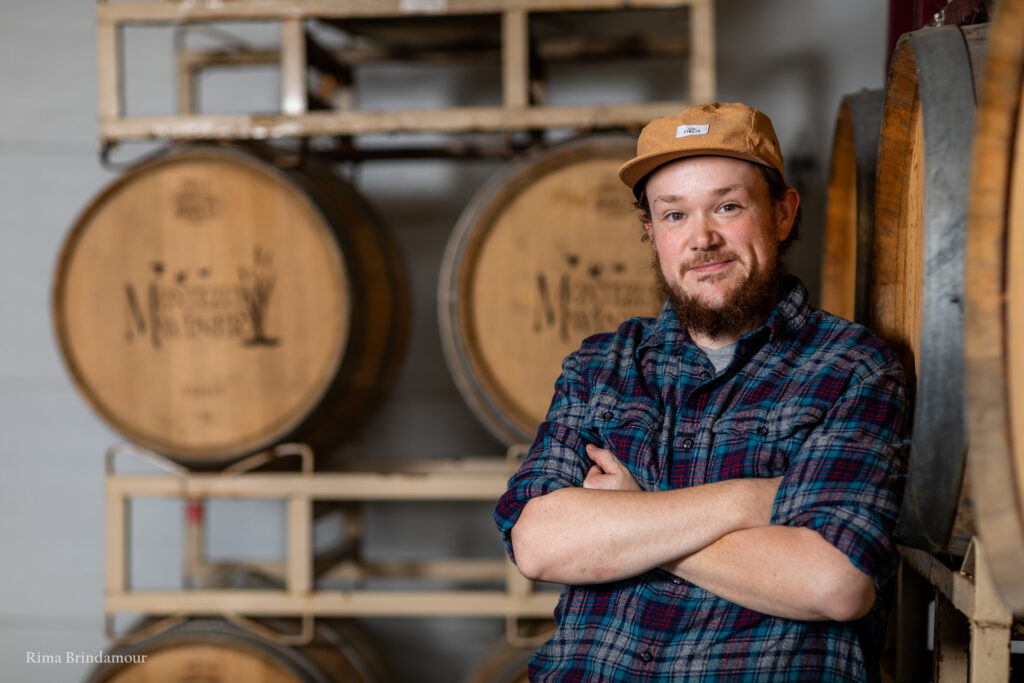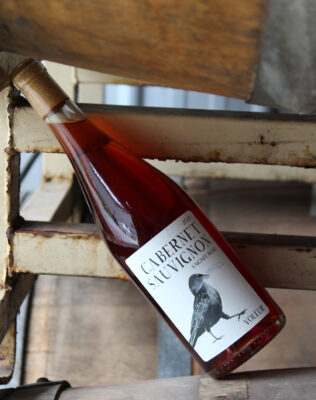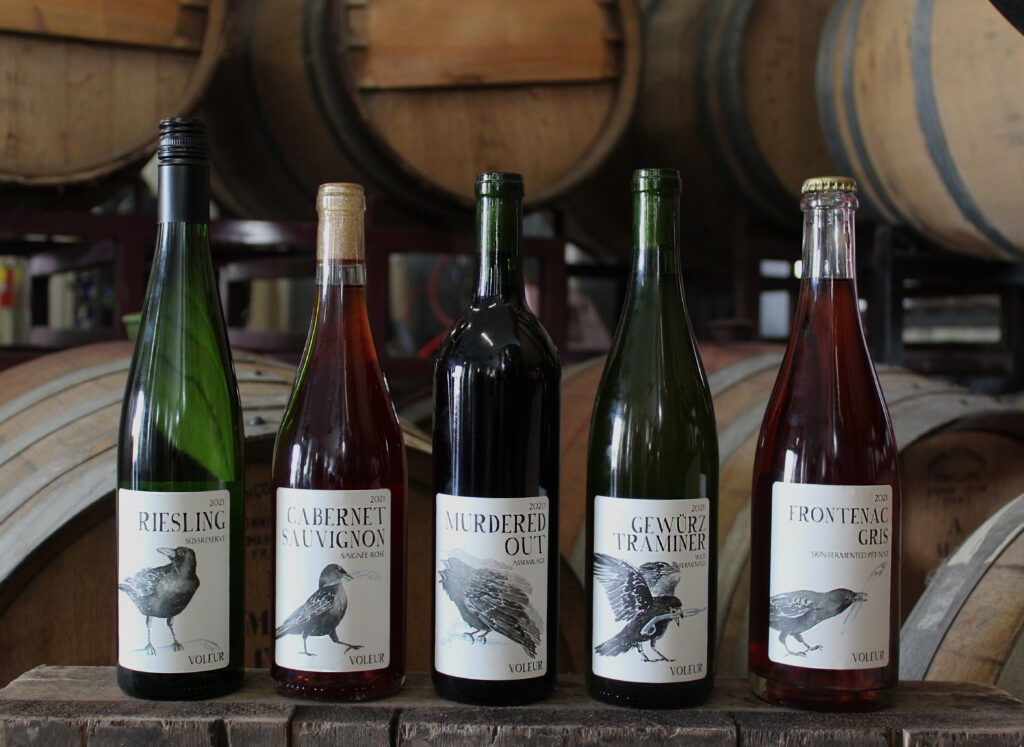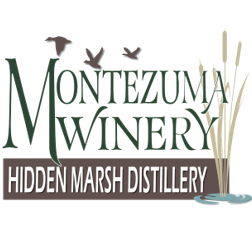For over two decades, the Martin family has been crafting head-turning products at Montezuma Winery in Seneca Falls. Not unlike the origin of many Finger Lakes wineries, the Montezuma story starts with a family farm; the Martins parlayed years of commercial beekeeping experience into a small meadery in their hometown of Sterling, NY. After some experimentation with fruit wines, the Martins moved the operation to Seneca Falls and founded Montezuma Winery in 2001. With a plan to shift focus to grape wines, they found themselves at a decision point: should they invest in a vineyard of their own, or would it be better to build partnerships with existing growers? Though a picturesque vineyard is a welcome sight at most wineries, the expertise required to grow premium quality fruit takes years to accrue. That in mind, the Martins opted to center their efforts on winemaking, establishing lasting relationships with local farmers and leaning on their grape growing expertise to produce a dizzying array of unique and noteworthy wines.

Every year, Montezuma Winery purchases over 330 tons of NY-grown grapes, blueberries, cranberries, apples, and more from more than a dozen local farms to produce their vast portfolio. The benefit to the local economy and environment that this arrangement provides is obvious, but the impact on the quality of the finished wines cannot be understated. By building relationships with talented growers, the Montezuma team has been able to specialize in winemaking; trusting that they’ll have access to high-quality fruit enables them to spend their time worrying about technique, giving them the time and space to maximize that fruit’s potential. Additionally, the proximity of these farms to the winery allows for the winemakers’ involvement in growing decisions—by monitoring fruit health and development regularly, they’re positioned to make suggestions that will align the fruit’s chemical composition with the stylistic aims of the finished product. This fine-tuning is especially evident in Montezuma’s newest series of wines: Voleur.

French for “thief,” the Voleur series seeks to blend thousands of years of winemaking tradition with bleeding edge technique and technology. The brainchild of Montezuma’s Head Winemaker, Phil Plummer, Voleur wines showcase the quality of locally-grown fruit, shot through the lens of one of the Finger Lakes’ most adventurous winemaking teams. “Wine is a major plot device of the human story, traversing thousands of miles and thousands of years,” Plummer says, “Voleur wines are an opportunity for us to draw on this accumulated experience while highlighting the magic of our particular place and time.” Crafted in small batches, these wines are distinct and one-of-a-kind representations of both novel ideas and rediscovered, ancient winemaking practices.
Voleur wines are explorations of winemaking style, and the success or failure of those explorations are dependent upon the composition of the fruit from which they’re made. Maintaining partnerships with skilled grape growers allows for more hits than misses. “Having an opportunity to get to know a vineyard year after year gives us an idea of what we might expect from that fruit in any given vintage,” Plummer explains. “Often, this understanding is what inspires our Voleur wines.” An example of this is the 2021 Voleur Süssreserve Riesling. Made from Riesling grown by the Bassette family at Airy Acres Vineyard in Interlaken, it’s a New World approach to the German tradition of blending unfermented juice back to finished wine in order to add sweetness and temper alcohol. According to Plummer, the fruit sourced from Airy Acres is ideally suited to this style. “We’ve been working with the Bassettes since the 2018 vintage, and I’m always blown away by how well their fruit hangs onto its acid, even at full ripeness,” he says. “That bright acidity allows us to leave some sweetness behind without tipping the wine out of balance—perfect for a technique like Süssreserve.”
Released earlier this month are five new Voleur wines, showcasing both expert grape growing and creative winemaking. Made from the 2020 and 2021 vintages, these wines are a clear illustration of year-to-year variability and its impact on the finished product. The sole 2020 offering, a dry red blend called Murdered Out, is a microcosm of that vintage’s near-perfect growing conditions. “From a grape growing standpoint, you can’t ask for much better conditions than we saw in 2020,” Plummer opines. “Not having to worry about the weather allowed us to let fruit develop for as long as it needed to give us the concentration and dimension we desired. From there, it was just about finding the pieces from each farm that played together most harmoniously.” Conversely, the 2021 vintage was a challenge, as heavy rain through harvest increased the amount of input required to deliver quality fruit. “In a year like 2021, the degree of difficulty increases in both the vineyard and winery,” he says. “In those seasons, I’m even more grateful to be working with growers who are focused entirely on what their vines need to produce healthy fruit. Outsourcing the growing allows us to focus on the winemaking adjustments required to make compelling products under challenging conditions.” One such adaptation is evident in the 2021 Voleur Cabernet Sauvignon Saignée Rosé. French for “bleed,” Saignée is a technique where juice is removed from early red wine fermentations to increase their richness—a useful tool in vintages where ripening is stifled by cool, wet weather. The bled juice may then be fermented, in this case with indigenous yeast, to produce texturally-complex rosé.

Joining the Süssreserve Riesling, Murdered Out Red, and Cabernet Sauvignon Rosé are a skin-fermented Frontenac Gris Pét-Nat sparkling and a wild-fermented Gewürztraminer. All are available in the Montezuma Winery tasting room in Seneca Falls and are reflective of expert grape growing and innovative winemaking. At limited production quantities, they won’t be around for long. Stop by and taste them before they’re gone!

